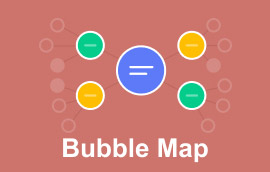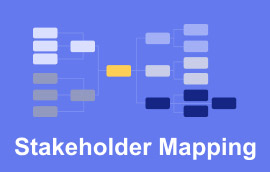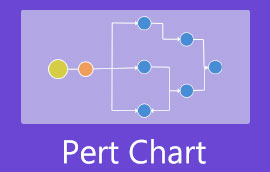What is a Semantic Map | Learn to Make and Strategize Using the Sample Ones Here!
A comprehensive semantic map example will be a great help in making one for yourself, right? We know how difficult it is to create a semantic map without knowing why and what it is for. With that being said, let us first distinguish why others make one for themselves and how it helps them. First and foremost, based on studies, semantic mind mapping has been proven to be an effective method in assisting students in improving or expanding their vocabulary skills. How? For example, you are learning new words or even a new language. You will quickly identify and memorize the terms related to the unfamiliar word you are learning through a semantic vocabulary map.
In addition, this method also helps medical students identify faster medical terms that are difficult to understand. This is also true in solving problems in many different aspects. Thus, if you want to know more about the semantic map and how to create one, pursue reading the contents below.

- Part 1. Extended Knowledge About Semantic Map
- Part 2. 3 Educational Semantic Map Examples
- Part 3. The Top 4 Trusted Semantic Map Makers
- Part 4. Questions with Regards Semantic Map
Part 1. Extended Knowledge About Semantic Map
What is the Semantic Map?
A semantic map is a graphical form of categorized information via graphic organizing or webbing of related words and phrases. On the other hand, the semantic mapping definition is a strategy where the students' knowledge and vocabulary can be widened by identifying and recalling terms quickly through visual representations.
Furthermore, semantic mapping has been new to others, for it is also correlated to networking, concept mapping, plot mapping, and webbing.
Part 2. 3 Educational Semantic Map Examples
1. Vocabulary Semantic Map
This is the most used semantic map of the students, especially the communications ones. Moreover, as mentioned previously, this map shows the related precision of the main topic, which the readers can easily recall. As the simple sample is given below, the term is foreign without a direct translation. On the semantic map example, the attributes that will help the reader get the meaning are the ones that are anchored to the term.

2. Transportation Semantic Map
This kind of semantic map will be very beneficial if you educate kids about the different types of transformation; land, air, and water. Furthermore, you can always add some cute sample images on each part to help the kids boost their imagination.

3. Medical Semantic Map
A semantic map will also be a great help in reviewing and teaching medical terms effectively. Furthermore, this kind of semantic mapping speech is a part of therapy for those who are taking medications due to their heart problems or others alike. With this being said, many practitioners are turning to semantic maps to make their thoughts and explanations clearer to their patients.

Part 3. The Top 4 Trusted Semantic Map Makers
In creating a semantic map, you should keep in mind that it should have essential parts. First, you must have the subject matter that will be your starting point and the reason why you are creating one. Next, since the map needs to be branched out, you must add nodes where you will mark your sup-topics because that's what is semantic mapping strategy is all about.
In addition, you may also consider adding some icons, images, or colors to snake your semantic map radiant-looking. Finally, it would help if you had a trusted map maker to do all these things effectively. So, without any further adieu, let us all learn the 4 of the most trusted map makers of the year!
1. MindOnMap
The MindOnMap is a mind mapping tool that you can trust. It is an online tool that allows you to make different kinds of elegant and creative mind maps with the help of its multiple presets, all for free! Unlike other tools, the MindOnMap allows you to create a printable semantic map in very simple steps. Moreover, the unique part about it is that aside from its capability to export files in different formats such as SVG, PNG, JPG, Word, and PDF, it can also enable you to share your creation with your colleagues via the link! Therefore, let us all witness how this marvelous mapping tool creates a semantic map.
Secure Download
Secure Download
Check Out the Website
Initially, visit the official website at www.mindonmap.com and start working by clicking the Create Your Mind Map. Log in using your email account to create your secured mind mapping world.

Start a Project
To make a creative semantic map, click the New button and choose among the recommended themes and templates to start.

Optimize the Nodes
This tool comes with shortcuts, as you can see in the picture, to help you ease the job. It also comes with tons of Themes, Styles, Outlines, and Icons. Now click on the main and the sub-nodes to customize your map. Note that it is better not to use sentences but a keyword or phrase instead.

Customize the Nodes
Be creative, and customize your nodes by changing the shape, adding images and colors. To add a photo, click the Image under the Insert portion when you click the specific node of your semantic map example. Then, you can also change the shape by going to the Style and clicking the Shape icon. The same goes for the color.

Get a Copy of the File
Once you are done, you can obtain the map to print or share. To do so, click the Export tab, and choose to click your preferred format. Then instantly, you will get the copy downloaded to your device. Otherwise, click the Share button to let your friends see your map via sharing the link with them.

2. MindMeister
The MindMeister is another online tool that makes semantic mapping meaningful. With its beautiful features and functionality, you can create maps instantly. However, unlike the previous tool, this MindMeister only gives limited features for its free trial version. Therefore, for you to enjoy its multiple features such as adding icons and images, colors, sharing of links, and using wonderful layouts to the fullest, you must register on its paid versions. Despite that, many are still trusting this tool. That’s why we share with you how it works through the steps below.
Visit the Official Site
Go and visit the official website, and hit Create a Mind Map to start making a semantic map. On the next window, sign up using your email or your social media address. Then choose among the plans it offers.

Start Making the Map
On the main interface, customize your main topic by naming it. Then to add a node click the Plus icon next to your primary node. On the side of it, you will see the present with all the features you can enjoy.

Save the Map
When you have all set, click the Cloud icon next to Upgrade Now. Hit then to Export the file. Choose a format, then click whether to save the semantic map example on your device or on your Google Drive.

3. Coggle
Cheers to another online mapping tool Coggle. This mind map software enables you to create maps easily by just logging in to work on flowcharts, unlimited images and icons uploads, actual mind map collaboration, and more! In addition, this online tool allows you to access it using your Android and iOs devices. Hence, for its free trial plan, you will only be allowed to take three personal private maps.
Log in to your email address once you reach its page. Choose your preferred plan as you go through making the semantic map.

On the main interface, start adding sub-nodes from your main by clicking the Plus icon wherever direction you hover your cursor with.
To add an image to your node, hit the Photo icon for each node to upload.

Get a copy for your device by clicking the Download icon.

4. SmartDraw
Finally, is this versatile SmartDraw for all levels. Furthermore, this web tool offers multiple template tags along with its capability to share your diagrams and maps. This user-friendly online tool ranked due to its all-around features and integrations, which is why lots of people trust it when it comes to creating comprehensive semantic maps in an effortless way.
Log in using your Gmail account to start. On the main page, choose one among the popular templates it offers.

On the main interface, start creating your map by adding your sub-nodes. To do so, click the Add tabs depending on your preferred direction. Also, to add an image, go to Insert, then click the Picture to upload.

Finally, save the map by going to the File and choosing Save As. Otherwise, you can directly hit the Print for you to instantly produce a hard copy of this printable semantic map.

Further Reading
Part 4. Questions with Regards Semantic Map
1. Who can use the semantic map?
A semantic map can be used by anyone. However, it is usually used by students, teachers.
2. Who developed the semantic map?
Heimlich and Pittlman developed the basic strategy for the semantic map.
3. Can I make a semantic map regarding food?
Yes, you can! You can actually use the semantic map on different topics, including food.
Conclusion
To conclude, creating a semantic map would be fun if you used a creative and comprehensive strategy with the help of a wonderful map creator. Be more clever when creating a semantic map when you use the top 4 tools presented, especially the MinOnMap!










